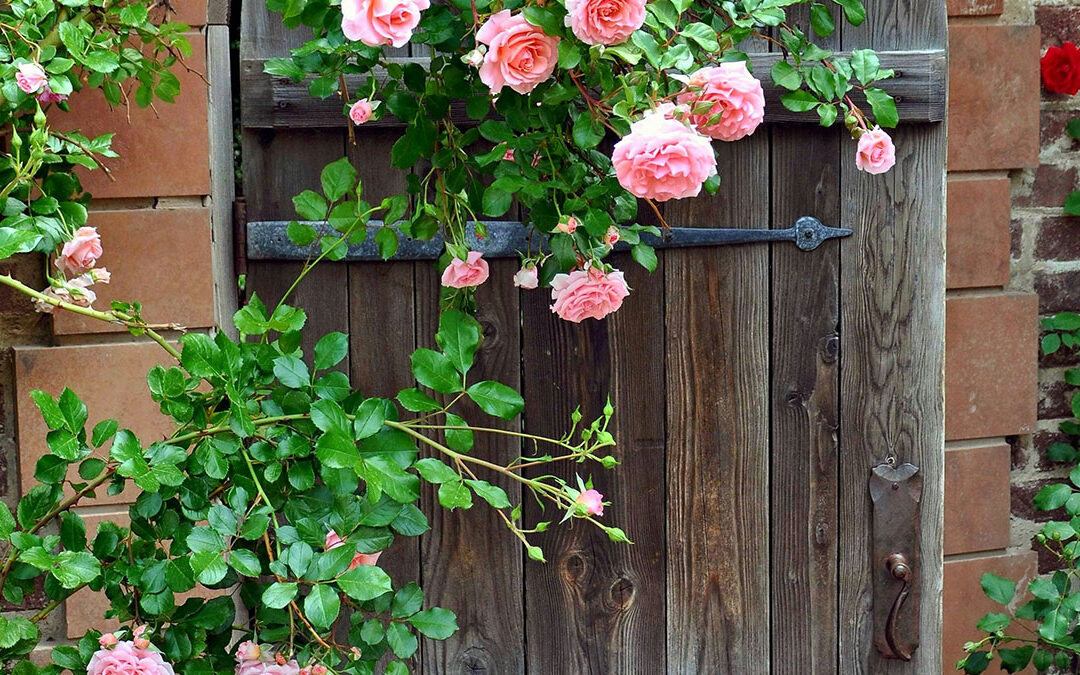Climbing roses can turn a simple fence into a stunning vertical garden, and in Northern California’s mild climate, they thrive with just a bit of thoughtful care. Whether you’re in the foggy zones of the coast or the sunnier inland valleys, here’s how to train and prune your climbing roses for healthy growth and breathtaking blooms.
Why Climbing Roses Are a Great Fit for Northern California
Our Mediterranean climate—with cool, wet winters and long, dry summers—offers the perfect environment for roses to flourish. Climbers, in particular, appreciate the generous winter rains and abundant sunlight during the growing season. They can live and bloom for decades when well cared for, so investing time in proper training and pruning is well worth it.
Step 1: Choose the Right Rose and Location
Pick a climbing variety suited for your microclimate. Favorites in Northern California include:
- ‘Cecile Brunner’ – A vigorous climber with tiny pink blooms and a long flowering season.
- ‘Don Juan’ – Deep red, fragrant, and thrives in full sun.
- ‘Lady Banks’ – Thornless and nearly maintenance-free once established, great for large fences.
Locate a sunny spot—ideally with 6+ hours of sunlight per day. Good air circulation is key to preventing fungal diseases, which can be an issue in coastal areas.
Step 2: Train Your Climber Early
Training begins the moment your rose is planted or newly established:
- Install horizontal supports on your fence using sturdy wire, eye hooks, or a wooden trellis. Space them about 12–18 inches apart vertically.
- As the rose grows, gently bend the canes and secure them along the horizontal lines. Bending the canes horizontally (instead of letting them shoot straight up) encourages more side shoots, which means more blooms.
Pro Tip: Use soft garden ties or stretchy fabric so you don’t damage the canes as they expand.
Step 3: Prune at the Right Time
Northern California gardeners should aim to prune in late January or early February, just as the rose is waking up but before strong new growth starts.
How to Prune:
- Remove dead or diseased wood.
- Cut back any spindly growth that’s unlikely to support flowers.
- Leave the main framework canes, but shorten lateral shoots to 2–5 buds (about 6–12 inches).
- If your climber is out of control, it’s okay to be more aggressive—roses are resilient.
Note: Rambling roses like ‘Lady Banks’ bloom on old wood, so prune them right after blooming, not in winter.
Step 4: Ongoing Maintenance
- Water deeply during dry spells—especially from April through October.
- Mulch generously to retain moisture and suppress weeds.
- Feed in early spring with a balanced rose fertilizer, and again after the first bloom flush.
Final Thoughts
Climbing roses add elegance and romance to any Northern California garden fence. With regular pruning and careful training, you’ll enjoy a wall of color and fragrance for much of the year. Don’t be afraid to get hands-on—your roses will reward you with spectacular growth and blooms that just get better with time.
